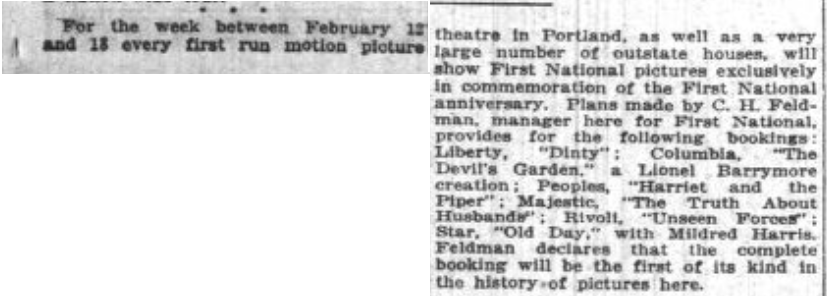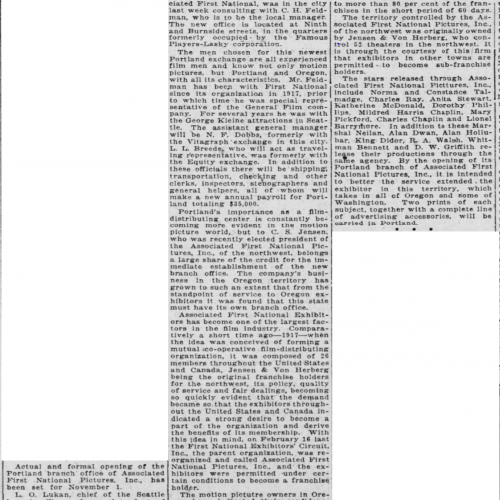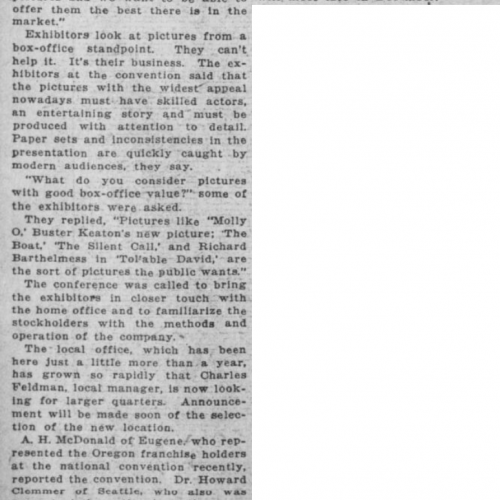According to The Sunday Oregonian, a Portland office for Associated First National Pictures opened, in the city, on November 1, 1920. This was big news for Portland theaters as Associated First National Pictures was a large nationwide film distributor, with famous stars attached to their films, such as Charlie Chaplin and Mary Pickford, meaning that Portland theaters will be able to get better pictures easier and faster. Associated First National Pictures decided to open a branch, in Portland, because of the large success of their films in the Oregon area, they thought it would be a good idea to open a branch here so that their films are more easily accessible to the theaters in the area.
A large distribution company being in the Portland area also meant that this distributor could have a greater command of what was being played in the area. According to The Oregon Daily Journal, between February 12, 1921 and February 18, 1921 a large number of Portland theaters, and also theaters in other states, are exclusively showing films from Associated First National Pictures, in honor of the company's anniversary. This shows how a large distributor can influence theaters to play what they want them to play, which is, more than likely, going to be films from said large distributor. Large distributors will even start to vertically integrate exhibition, distribution, and production, meaning that these large distributors could completely have control what is being shown in an area, because they create the films, distribute them, and then exhibit them. In fact, According to WarnerBros.com, Associated First National Pictures was bought out by Warner Bros in 1928, a large distribution company that was vertically integrated.

According to The Sunday Oregonian, there also seemed to be some disconnect between Associated First National Pictures and the exhibitors of Oregon. The exhibitors wanted more high quality content to be produced for their theaters, they didn't think the films were cutting it and so appealed the distributor to make more high-quality content that they could release for their films. This article shows how exhibitors are reliant on distributors for the success of their theaters. If an exhibitor is not owned by a large distribution company, then that theater must rely on distributors to deliver quality content that will bring in an audience.

